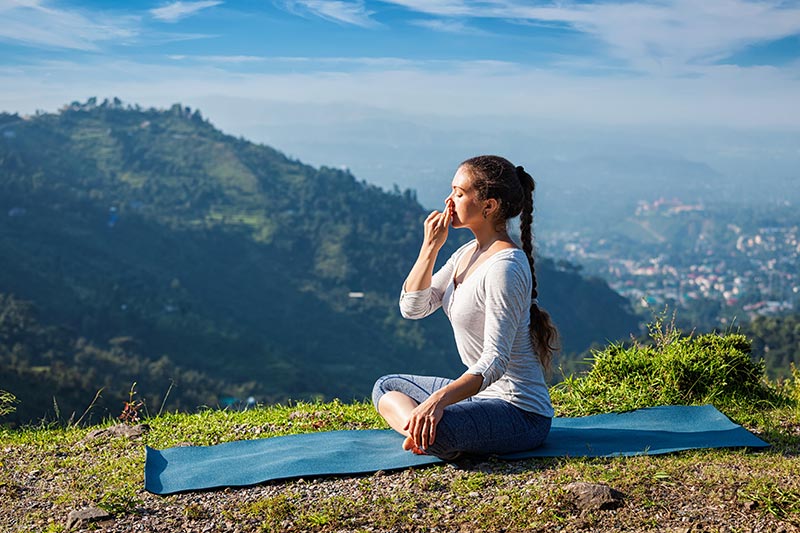We humans are more advanced than any other life forms on the face of the earth be it in lifestyle or intelligence but the one thing and in fact the most vital thing we have in common is our breath. Breath is not just oxygen but life itself; pranayama is the cornerstone of yoga, so if you want to start your journey with yoga, learning how to practice pranayama is crucial.
The word ‘Pranayama’ when split gives you prana which means life, breath or energy and Ayama which mean control, expansion or regulation. Hence it can be translated as ‘control of breath’.
This blog will serve as a starting point and answer questions relating to when, where, how, and why of pranayama.
When is the best time to practice pranayama?
Yoga and nature go hand in hand, so it is easier to mimic the sun’s timing for pranayama. The optimal time to practice pranayama would be in the early morning where your surrounding environment is quiet and the morning air is fresh, if this is not feasible you can also practice after sunset. Pranayama must also be done on an empty stomach.
Where can you practice pranayama?
Choose an ambiance that your comfortable in and preferably away from your daily life and distractions. As for the position, sit erect on a mat with your shoulders wide opened to allow easy flow of air in and out of the lungs. If you prefer practicing in the morning complete your morning ablutions such as emptying your bladder and bowel before you begin.
How to practice pranayama?
There are many types of pranayama each of which offers specific health benefits, here are a few
- Bhastrika pranayama for heart health
- Udgeeth pranayama for the mind
- Kapalbhati pranayama for the stomach
- Bahya pranayama also for the stomach
- Anulom vilom pranayama for healthy circulation
- Bhramari pranayama for the mind
- Pranav pranayama for occasional stress
The above-mentioned types of pranayama are not specific for a health benefit, but contribute to overall health and wellness.
Sahita pranayama: step by step
This form of pranayama is the easiest and can be adopted by beginners
- Sit in a comfortable position
- Breath in and out normally focusing on your breath
- Hold your breath to the point where you are comfortable and experience the calmness
- Exhale in a natural manner
- Do this entire process for three to five minutes
Sahita pranayama can increase your breath-holding capacity as you practice daily; preparing your body to take on more advanced forms of pranayama such as ‘nadi shodhana pranayama’ (alternate nostril breathing)
Why pranayama?
Practicing pranayama ritually provides numerous benefits to the body such as:
- Promotes memory and concentration
- Calms down a busy mind
- Supports healthy circulation
- Nurtures healthy aging
- Augments healthy immune function
- Promotes removal of toxins from the body
- Awakens Agni and assists healthy digestion.
A word of caution; pranayama must not be practiced if you are pregnant or you suffer from any medical condition. In such situations, do consult with a medical practitioner or health care provider.






